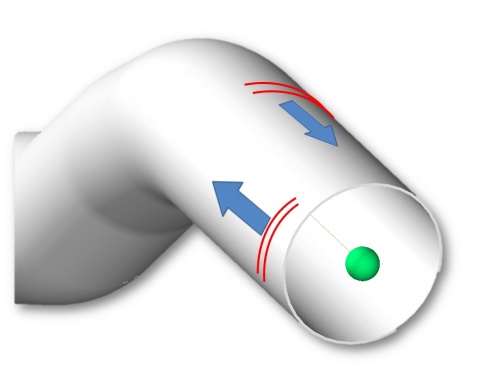Difference between revisions of "Measure Large Diameter Tubing"
From ATTWiki
(→Wide Scan Technique for Large Diameters) |
(→Wide-Scan Technique for Large Diameters) |
||
| Line 26: | Line 26: | ||
* Second - move to the other end, and rotate the probe around the tube slightly. We recommend about 90 degrees of rotation. Then scan the new end and new side of the cylinder.<br><br> | * Second - move to the other end, and rotate the probe around the tube slightly. We recommend about 90 degrees of rotation. Then scan the new end and new side of the cylinder.<br><br> | ||
| − | + | ||
</td> | </td> | ||
<td width=300> | <td width=300> | ||
Revision as of 18:44, 11 July 2012
|
|
Wide-Scan Technique for Large Diameters
|
VTube is immune to diameter sizes if you follow the wide-scan technique to measure larger diameters. If a diameter surface stripe does not cover enough angular distance, then the math engine loses accuracy in calculating the centerline of a straight.
|
Other Pages
- Back to VTube-LASER


